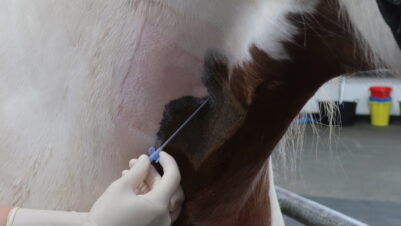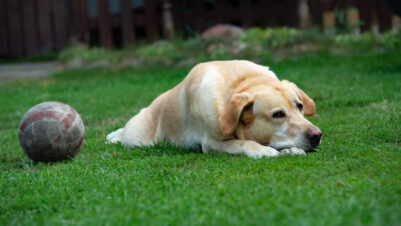As equine patients are athletes, it is common for eRVNs to have a significant role in caring for orthopaedic patients. This article will explore the role of the eRVN when nursing orthopaedic patients.
As horses are athletes that are often used for high-impact disciplines such as dressage, show jumping, racing and eventing, they will often require an assessment of the musculoskeletal system during their working career
Equine orthopaedic patients
Orthopaedics is a specialty that focuses on diseases affecting the musculoskeletal system which includes bones, joints, ligaments, muscles and nerves. As horses are athletes that are often used for high-impact disciplines such as dressage, show jumping, racing and eventing, they will often require an assessment of the musculoskeletal system during their working career. eRVNs are well placed to assist with the assessment and treatment of these patients. Whether this be taking a history from the client, assisting with a lameness work-up, accompanying a patient through the perioperative journey and/or supporting the patient and client during home care and rehabilitation, there are many opportunities for eRVNs to use their specific skills.
Schedule 3 procedures
eRVNs must work within the remit of Schedule 3 of The Veterinary Surgeons Act 1966. This has been challenging in the past due to a lack of clarity surrounding Schedule 3. The British Equine Veterinary Association (BEVA) has produced a set of guidelines to help with the interpretation of Schedule 3 with a view to instilling confidence in veterinary surgeons to delegate more procedures to eRVNs in practice.
Within the BEVA Schedule 3 guidelines there are several permitted acts that may be delegated to an eRVN or equine student veterinary nurse (eSVN) (under the direction or supervision of a veterinary surgeon as per Schedule 3) that are relevant to nursing the equine orthopaedic patient
Readers are encouraged to read the “How to implement the guidance” section on the BEVA website, which contains further guidance for each skill including any Schedule 3 considerations and requirements for additional training.
Within the BEVA Schedule 3 guidelines there are several permitted acts that may be delegated to an eRVN or equine student veterinary nurse (eSVN) (under the direction or supervision of a veterinary surgeon as per Schedule 3) that are relevant to nursing the equine orthopaedic patient. These are as follows:
Administration of medication including via intravenous (IV), intramuscular (IM), subcutaneous (S/C), oral (PO) and topical routes: the administration of medication is important when nursing the equine orthopaedic patient. Medication may take many forms, for example sedation, analgesia or antibiotics. The medication must be prescribed by the veterinary surgeon who must then delegate the administration of medication to the eRVN. Pain scoring is another role that eRVNs can carry out to a high standard. This will ensure that the patient is monitored correctly and that an effective analgesic protocol is implemented
Intravenous catheterisation: eRVNs can place an IV catheter prior to surgery when directed to do so by a veterinary surgeon and administer any premedication required. The medication must be prescribed by the veterinary surgeon who must then delegate the administration of medication to the eRVN
Phlebotomy (taking of blood samples): eRVNs may take blood samples from patients to facilitate diagnostic tests such as pre-anaesthetic screening
Radiography, computed tomography (CT), scintigraphy and magnetic resonance imaging (MRI) (acquiring images, not diagnosing pathology), where appropriate training has been completed: there is a large role in equine practice for eRVNs to work in imaging. It should be reiterated here that the role of the eRVN is to obtain images of a diagnostic quality to pass on to the veterinary surgeon for diagnosis. Appropriate training should be provided and competence assessed before delegating CT, scintigraphy or MRI imaging to an eRVN
Wound assessment, dressing and bandaging: eRVNs are in a good position to assess wounds, select the correct dressing and apply bandages to patients following orthopaedic surgery or trauma. The eRVN would work under the direction of the case veterinary surgeon during this process
Suturing and repair of superficial wounds where appropriate training has been completed: suturing can be delegated to eRVNs by veterinary surgeons in appropriate situations which then allows the veterinary surgeon to focus on other tasks. Appropriate training should be provided and competence assessed before delegating this skill to an eRVN
Perineural analgesia where appropriate training has been completed: eRVNs can be involved in lameness examinations, performing perineural analgesia of the distal limb, for example, when directed to do so by the veterinary surgeon. The role of the eRVN here is to place the nerve block and it is the role of the veterinary surgeon to diagnose the lameness following this. Appropriate training should be provided and competence assessed before delegating this skill to an eRVN
Placing an endotracheal or nasotracheal tube to maintain a patent airway: intubation can be delegated to eRVNs during the anaesthetic process. Appropriate training should be provided and competence assessed before delegating this skill to an eRVN
Administration of sedation: an eRVN may administer and monitor sedation in a horse subject to the following (BEVA, 2024):
- The procedure is being carried out under the direction of a veterinary surgeon
- An animal-specific sedative dosing protocol has been agreed for the eRVN to follow
- The directing veterinary surgeon is available (not necessarily on the premises) to advise in the event of complications or an indication to deviate from the agreed protocol
- The administration and monitoring of sedation, in relation to the specific patient and procedure, is within the scope of competence of the eRVN
This is a particularly useful skill as veterinary surgeons can delegate the administration of sedation to eRVNs during imaging procedures such as radiography or MRI and this can make the procedure more time efficient.
Maintenance of anaesthesia: an eRVN may induce and maintain general anaesthesia in a horse subject to the following (BEVA, 2024):
- The procedure is being carried out under the supervision of a veterinary surgeon (vet 1) other than the vet carrying out the surgery (vet 2), ie vet 1 is present on the premises and able to respond to a request for assistance if needed
- An animal-specific anaesthetic drug dosing protocol has been agreed for the eRVN to follow
- The protocol provides for potential deviations to be explored, discussed and pre-authorised
- The maintenance of general anaesthesia, in relation to the specific patient and procedure, is within the scope of competence of the eRVN
Veterinary surgeons can therefore delegate the monitoring of an anaesthetic to an eRVN as long as the requirements above are fulfilled. This gives eRVNs with a specific interest in anaesthesia the opportunity to be more involved with the anaesthetic process. The supervising veterinary surgeon may turn their attention to more vet-specific tasks following the delegation of this skill, but must remain on the premises and be in a position to provide direct support if required.
Ambulatory nursing
The eRVN can build a trusting relationship with the client when the horse is at the practice. This relationship can be further developed during home visits to encourage client concordance with treatment plans
There are further skills that the eRVN can utilise when nursing the orthopaedic patient. eRVNs can have a significant role in the home recovery of patients. The ambulatory nursing role facilitates closer contact with clients and the patients themselves. The eRVN can build a trusting relationship with the client when the horse is at the practice. This relationship can be further developed during home visits to encourage client concordance with treatment plans. This will benefit equine patients enormously and contribute to job satisfaction and retention for eRVNs in the long run. Procedures that eRVNs may perform on an ambulatory basis for orthopaedic patients may include, but are not limited to: post-operative checks, suture removal, medication administration (prescribed by a veterinary surgeon), pain scoring, bandage changes and radiography. These procedures would be delegated to the eRVN by the veterinary surgeon.
Conclusion
eRVNs are keen to work hard to bring about a positive transition within equine veterinary practice and their skills can be used particularly effectively when nursing orthopaedic patients. Overall, this can lead to more effective treatment and recovery for the patients and better client concordance with home treatment plans. This will contribute to increased efficiency within the veterinary team, enhanced client satisfaction and, most importantly, higher standards of patient welfare and recovery.











